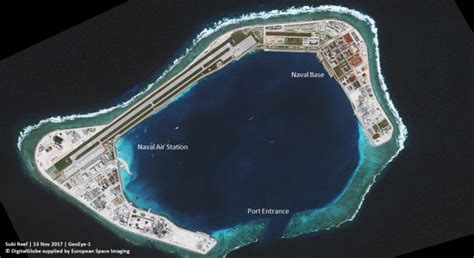China is currently making bold advances, the likes of which have not been seen by the nation since its dynastic days as a dominant empire. The nations is exerting force on its edges in both the South China Sea and Himalayan regions. While the nation’s regime has drawn sharp criticism for its sometimes authoritarian actions internally, in Hong Kong, and on the international stage, advances being made at the cost of smaller nations are often unnoticed.
Sometimes peaceful, sometimes less so, many in these two regions are finding themselves torn between ceding to China, which may entail losing some autonomy, and maintaining fierce independence at the risk of escalating tensions. While the South China Sea bears the nation’s name, this western edge of the Pacific south of Taiwan includes numerous small islands and is bounded by the Philippines, Vietnam and Indonesia.
While most of its land territory is uninhabited, there is still strategic importance to be held, as a third of global maritime trade passes through. The waters are highly disputed with some larger regions being claimed in part by up to seven nations.
Recently, China has made it known that it wants control over almost the entire sea, demonstrated through its building of artificial islands and military bases. The extensive works of construction that have come to dot the sea have caused anger among some smaller nations. China has also fired experimental weapons into the sea, which has incited nations like the United States to take similar action including sending aircraft carriers, with a total of 12,000 Navy personnel, into the region in a show of force utilizing live combat drills.
China has also taken an increased interest in nearby Oceania–the continental region comprising Polynesia, Melanesia and Micronesia. The nation has poured $1.6 billion into the region in the past decade, outdoing the United States, with a goal of developing countries there with trade and alliance benefits for China. Vanuatu and Samoa have each taken outright stances in favor of Chinese and against American decisions in the region.
On the other end of Chinese territory, the Himalayan region is seeing similar conflicts unfold, a few of which have recently led to bloodshed. The main conflict is with India, China’s neighbor to the south, with which it shares a long border, known as the “Line of Actual Control.”
However, that seemingly well-established demarcation line has recently seen brawls erupt over land each party claims as its own. Most recently, a skirmish involving Indian and Chinese troops ended with 20 of the former party dead and an undisclosed number of the latter. China has also just completed the construction of new villages seen via satellite imagery in the territory of Bhutan, the tiny mountainous nation that has long allied with India.
The area of development is located near the three countries’ trisection point, marking a part of India known as the Siliguri Corridor, the vital “chicken neck” that separates a few eastern provinces from the rest. While the establishments are small and most likely of little physical significance, their mere presence is alarming to many. For reasons unknown, Bhutan seems to be publicly denying the existence of such settlements, with an ambassador in the region, Major General Vetsop Namgyel, stating “there is no Chinese village in Bhutan” according to CNN.
While some foreign attitudes about these advances are constantly evolving, many are likely to remain firm. With a new American administration soon to take office, some hope ties may improve. What will undoubtedly be of utmost importance to the situation is diplomacy, if all sides do not want to escalate already risky tensions. The delicate balance of power in Asia and nearby has come into question.






